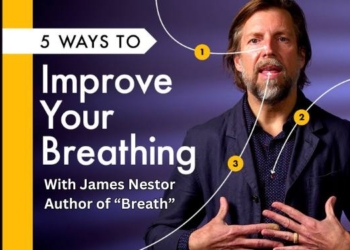
By Carly Dolan | Health Wholeness
Didn’t your mother ever tell you to sit or stand up straight? Well, whatever her motivation, it was good advice, because, it doesn’t just make you look better, it also has some serious health benefits for the body and mind. And it works as a preventative health technique in some ways as well. But if you work in an office or at a desk, then chances are your posture will have suffered over the years. If you are slouched over your phone, tablet or computer right now, then this article is for you!
The Importance Of Good Posture
Good posture opens your airways, keeping your respiratory system functioning properly. It protects your back and bones, strengthens the shoulders and spines and makes you look and feel better overall.
Good posture allows you to breathe properly. With an open chest and straight back, your lungs are able to take in a lot more air than they can if you’re slouched or hunched over. This will allow you to increase your oxygen intake, which, of course, is essential for circulation, energy levels and even the health of your skin. By breathing properly and opening the chest, your concentration will improve. That’s because the brain requires 20% of the oxygen we breathe in, despite it only taking up about 2% of the body’s mass.
Good posture also protects your back. People with bad posture increase their risk of slipped discs, backaches and pains, pressure in the chest, and poor blood circulation. Standing correctly, on the other hand, minimizes these risks because it is in line with the way the body was designed to stand or sit.
The Modern Office Worker
For a few decades, a large portion of western jobs has entailed sitting at a desk for 40 to 60 hours a week. This has led to slouching, hunching, snacking, little movement throughout the day, and all sorts of poor health outcomes as a result. In general, the office culture is terrible for our bodies. It causes a lack of circulation, bad posture, less energy, and sometimes weight gain.
There have been steps taken in recent years to improve office health, including healthy snack options in canteens, adjustable standing desks, and short breaks throughout the day to stretch and move around. Some corporate people have even taken to ‘walking meetings’, which involves going for a stroll to talk business.
How To Stand With Good Posture
It does take practice and toning to maintain good posture if you have gotten out of the habit of it. But it can easily be learned and corrected. Generally, if you work on maintaining good posture at all times, you will train your body to do it naturally. Try to think about it if you are waiting in a line or walking to the shop. Your shoulders should be back and down so that your chest feels open, stretching across your collarbone. However, your lower ribs shouldn’t be puffed out, so lightly engage your core to protect your lower back. Tilt your tailbone very subtly downwards, lengthening the spine and correcting any major curve in the back. If you are standing still, plant both feet on the ground (don’t lean on one leg), and line your hips up underneath your shoulders with the back of your head in line with your spine. Don’t let your neck tilt forward or backward.

Exercises To Improve Posture
These exercises will help strengthen postural muscles to improve your posture naturally. Some of them can even be done at work every couple of hours to get you away from your usual position hunched over a desk or computer.
Heart Opener
This is a particularly beneficial pose to practice at work. You can simply stand up next to your desk and do a few rounds of these chest and shoulder blade stretches every few hours. Stand with a straight back, shoulders back and down and tailbone tucked in. Keep your core slightly firmed to avoid collapsing into your lower back. On an inhale, open your chest, spreading across your collarbone and clasp your hands behind your back. Lift your hands up behind you as far as you can, without tilting forward and squeeze your shoulder blades towards each other. On an exhale, round your back, bringing your arms in front of you and clasp your hands, pulling forward to stretch along with your upper back and shoulder blades. Continue moving with the breath for a round of about 10 or 20, as many times throughout the day as you can manage!

Cow Face Pose
This pose involves the legs as well, but we’re going to ignore that part for the sake of this post since we’re focusing on posture. If you want to try it with the legs, you can follow instructions here. So, you can sit either in kneeling pose (vajrasana), sitting your buttocks on your heels, or in easy pose, cross-legged. Next, extend your left arm up towards the sky with your palm facing forward and bend the elbow, bringing your left hand to your spine. Extend the right arm to the side, palm facing down, and then internally rotate the palm so that it is facing behind you. Bend your right elbow and bring your right hand up the center of your back. Turn your forearm into the hollow of your low back. Roll both shoulders back and down, but don’t arch too much in the spine so that you are collapsing into your lower back. Keep your core engaged to avoid this. Reach your left elbow upwards and your right elbow downwards, while keeping your shoulders relatively even. Don’t allow your elbows to drift outwards – the top one should be beside your head and the bottom one beside your oblique. Firm your shoulder blades, drawing them together and down your back. (This may sound odd and confusing but if you attempt it, you’ll understand how it works!) Hold the pose for 10 to 15 long breaths and release for a few breaths. Then repeat swapping arms.















